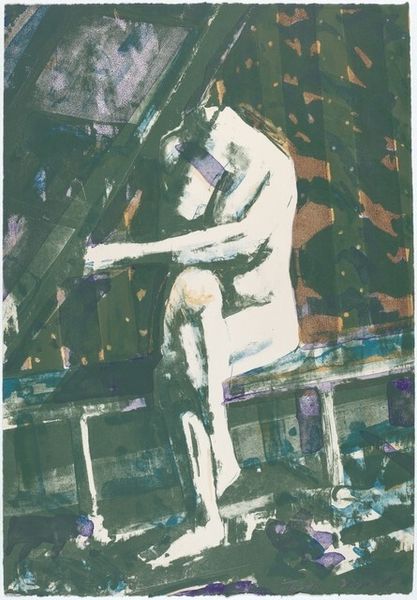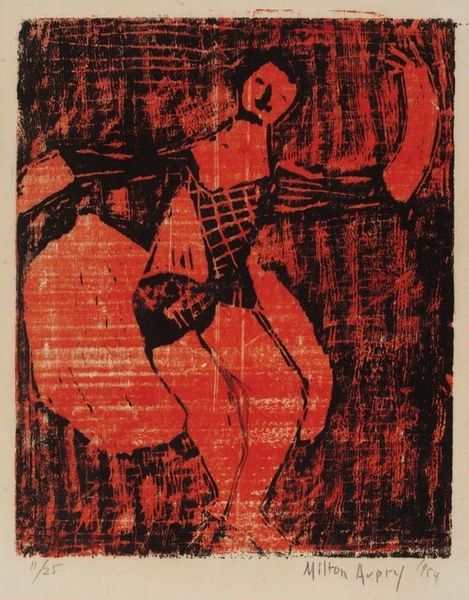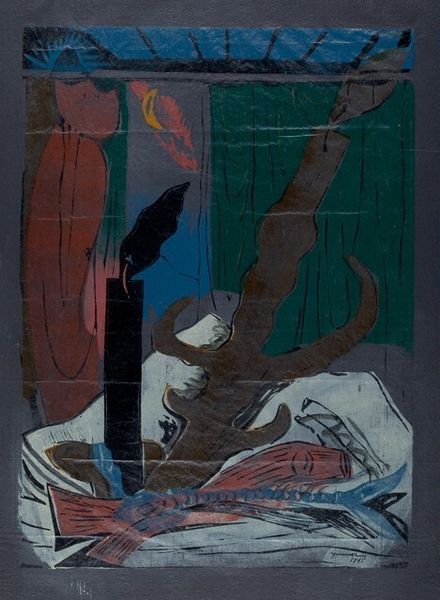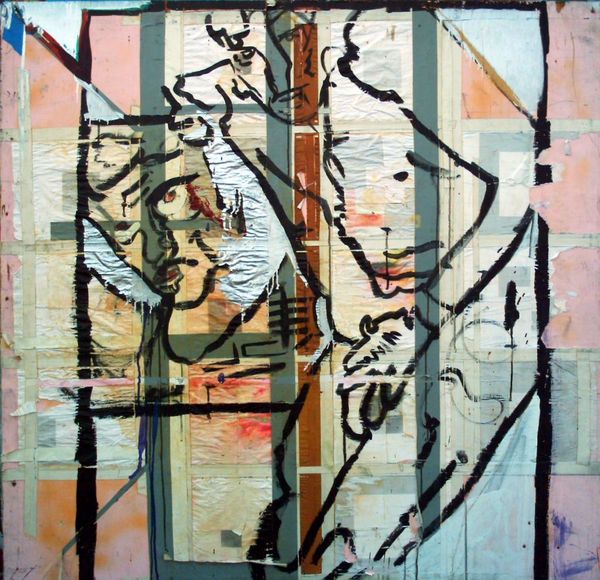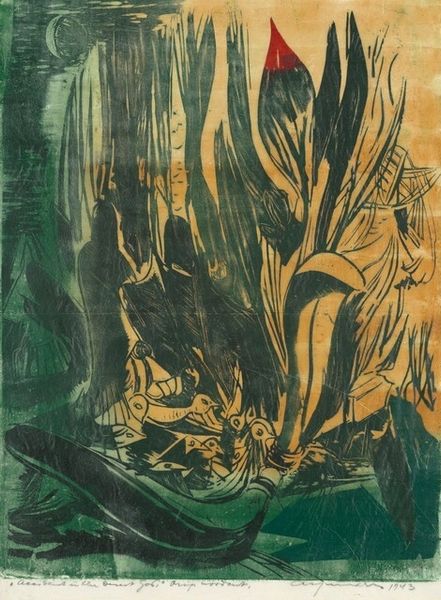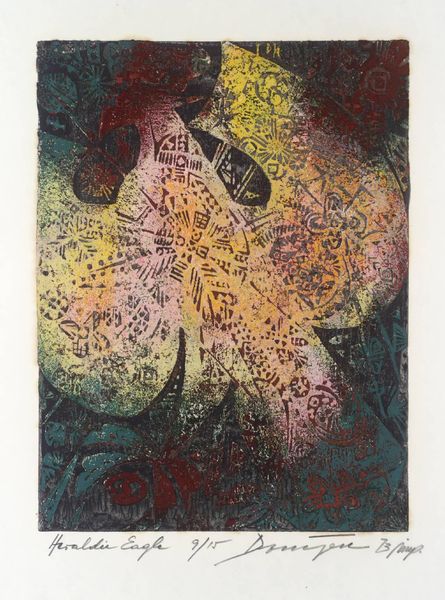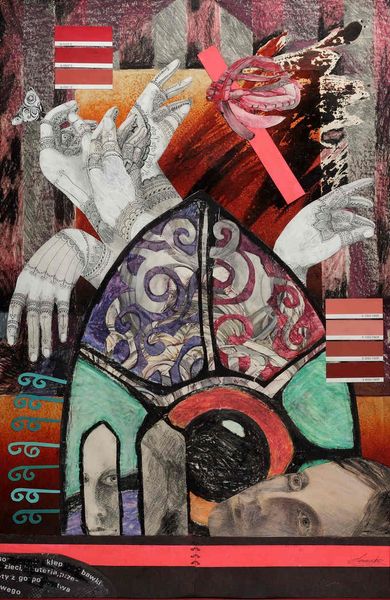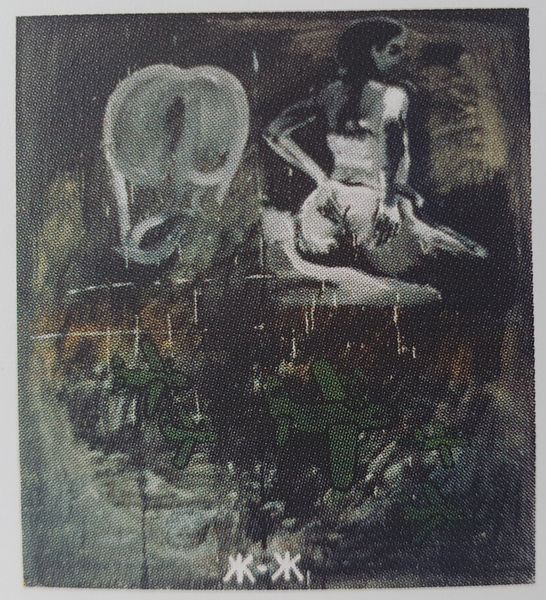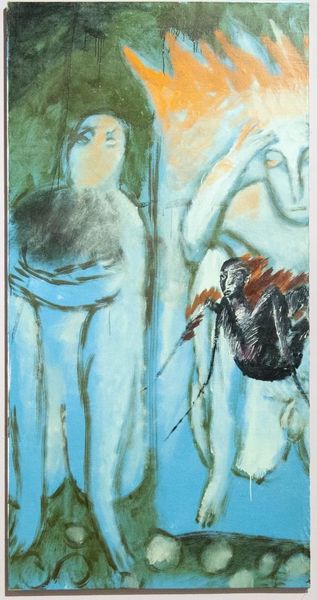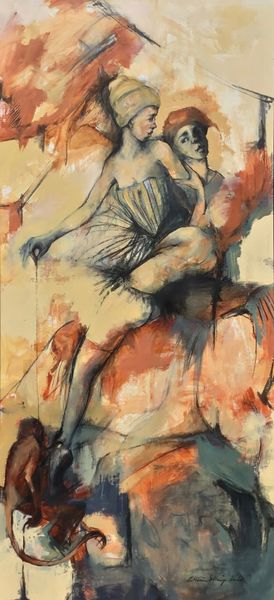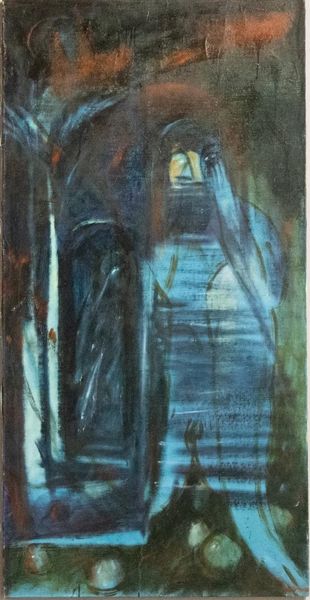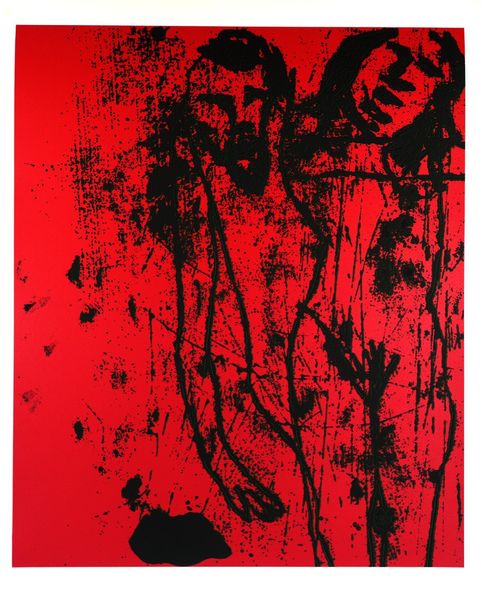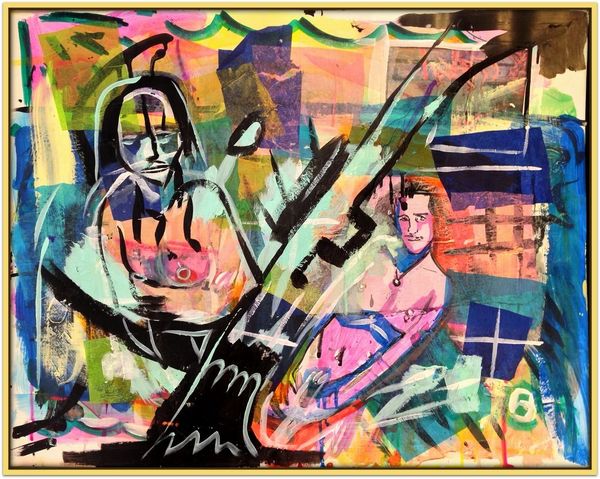
mixed-media, stencil, acrylic-paint
#
portrait
#
mixed-media
#
contemporary
#
street-art
#
postmodernism
#
stencil
#
acrylic-paint
#
figuration
#
graffiti-art
#
street graffiti
#
spray can art
#
folk-art
Copyright: Blek le Rat,Fair Use
Curator: Let's discuss "La gitane a la guitare," or "Gypsy with Guitar," a 1990 mixed media artwork by Blek le Rat. What strikes you about this piece? Editor: The immediacy of it! The rough texture of the wood, the stenciled image… It feels like it’s still vibrating with the energy of the street. I'm wondering about Blek le Rat’s fascination with the Romani figure, specifically. It certainly evokes some loaded stereotypes. Curator: Focus first on the execution. Blek le Rat masterfully exploits the grain of the wood, integrating it into the image itself. Note how the vertical lines intersect the swirling pattern of the dancer's dress, creating a sense of both confinement and dynamic movement. Editor: Confinement absolutely resonates. Look at the dress—it mimics bars or the edges of the wooden panel itself. Does this visual cage confine our perception as well? The Romanticized "gypsy" has been historically othered, and it prompts me to think about questions of cultural appropriation. Curator: While those concerns are important, consider the formal relationships. The monochromatic stencil allows for strong contrasts and emphasizes shape and silhouette, even if certain details are lost. The composition, you must admit, holds the gaze beautifully. Editor: But what is lost can be just as revealing. By rendering the Romani woman as a simplified, somewhat anonymous figure, Blek le Rat risks reinforcing harmful stereotypes. In a time when anti-Romani sentiment persists globally, representing this group with awareness is crucial. Who does it serve to perpetuate stereotypes of wandering and destitution? Curator: But doesn't this stenciled treatment create universality? This "everywoman" evokes themes about transient performers who make the streets their stages, creating temporary art. There's a rhythm between the ephemeral medium of graffiti and her art form. Editor: I cannot accept that interpretation without acknowledging the loaded context. Yes, perhaps a universal tale of movement and artistic survival is intended. But good art also needs awareness of its own implications and consequences. I worry about flattening nuanced histories and identities through aesthetics. Curator: It does present complexities, doesn't it? On the surface, it has rhythmic visual components. Editor: And on deeper levels, it prompts us to investigate how stereotypes can become part of even works of public art.
Comments
No comments
Be the first to comment and join the conversation on the ultimate creative platform.
